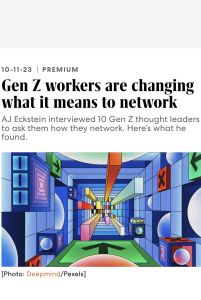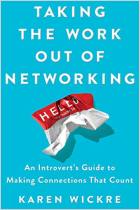Join getAbstract to access the summary!

Join getAbstract to access the summary!
AJ Eckstein
Gen Z workers are changing what it means to network
Fast Company, 2023
What's inside?
Gen Z’s pursuit of authenticity and peer connections is transforming professional engagement.
Recommendation
Generation Z is breaking away from traditional approaches to professional interactions by infusing their connection-making on LinkedIn with authenticity and humor. In this intriguing article, AJ Eckstein interviews 10 gen Z thought leaders to learn why they emphasize peer-to-peer connections and focus on building genuine, community-oriented networks that transcend conventional career advancement strategies. Eckstein thoughtfully uncovers how gen Z’s preferences are setting new standards for professional engagement and redefining the essence of networking in the digital age.
Summary
About the Author
Author AJ Eckstein is a speaker and writer focusing on generation Z, career advice leadership and the future of work.




















Comment on this summary